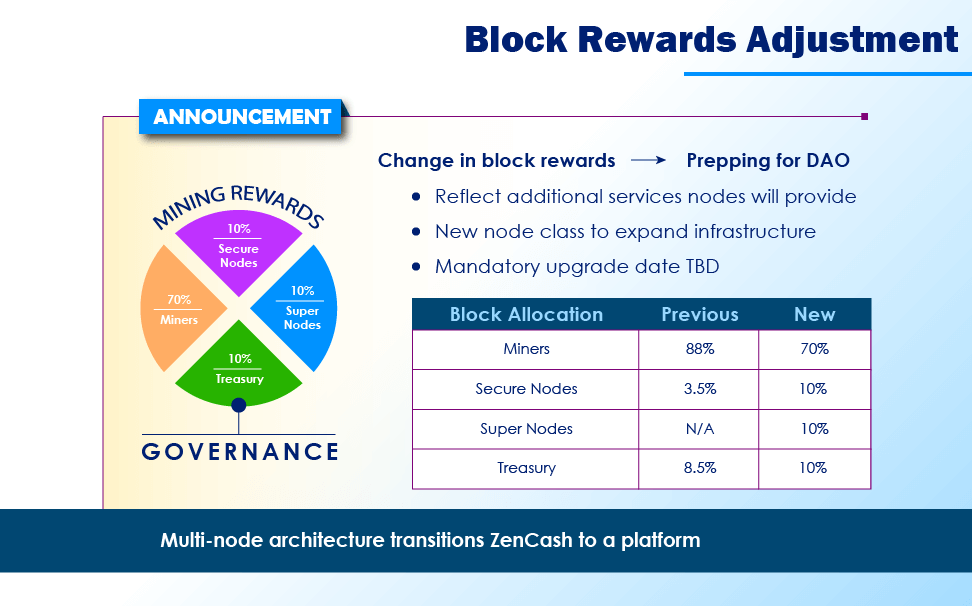The beta testing period of the Zen’s mandatory upgrade started on the 10th of July. ZenCash Super Nodes were officially launched 9 days late. Their whitepaper was published months ago, introducing the unique node network. Previously, it was operating with Secure Nodes, which helped the decentralization and censorship process. This made them resistant and also allowed them to be rewarded. When speaking of Secure Nodes, you need at least 42 ZEN to stake, also possess a TLS certificate and enough computational power to process the challenges in the network.
With the introduction of Super Nodes, ZenCash aims to raise the security and bring more utility with future services that will be implemented in the system. Super Nodes are more powerful than Secure Nodes because they bring economic and technical improvements. They manage specific network and system functions – hosting multiple services on sidechains, tracking and measuring Secure Nodes uptime, queuing the miner node payments. The tracking and payments will be brought on chain which is a major update because until now such functions were executed on external servers. Currently, with the help of sidechaining, ZenCash elevates itself from a cryptocurrency to a platform where services can be built. This way the Super Nodes will form the basis for developing this type of system.

In order to accomplish all these major improvements in functionalities, the requirements Super Nodes have to cover are also higher. There’s a need of 8GB of Ram memory, multiple CPU cores, 100GB of storage space, 96% of node uptime per day and of course the staking amount, which is necessary to be at least 500 ZEN. Some more information and detailed instructions on ‘How to set up your Super Node from scratch’ can be found here. If you already own a Secure Node and you possess everything needed for Super Node, you can upgrade it by following the migration guide, provided here.

Economic improvements include the raising of the reward for node operators. Until this moment they received 3.5% from the block reward and from now on it will be increased up to 20%. This reward is split between Secure and Super Nodes with a dedicated pool for both of it. This way, it is expected to have an equilibrium between the marginal cost and the marginal revenue. Super Nodes will have a higher cost to maintain, which predicts fewer of them but in same time the revenue will be independent of the Secure Node pool. ZenCash expects to boost the number of operating nodes in the network with almost 3-fold increasement of the reward. The quality of the systems that are comprising the ecosystem will also raise.